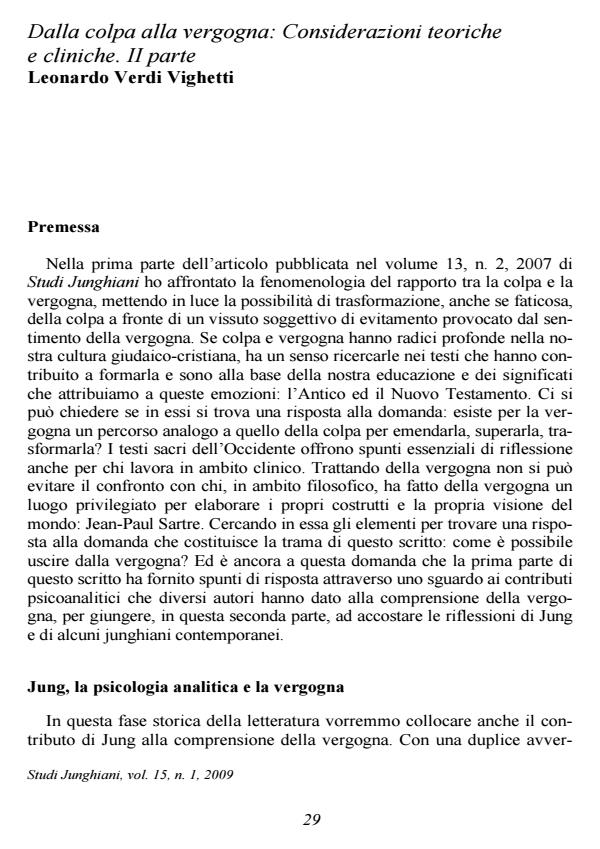Dalla colpa alla vergogna: Considerazioni teoriche e cliniche. II parte
Titolo Rivista STUDI JUNGHIANI
Autori/Curatori Vignetti Leonardo Verdi
Anno di pubblicazione 2009 Fascicolo 2009/29
Lingua Italiano Numero pagine 22 P. 29-50 Dimensione file 383 KB
DOI 10.3280/JUN2009-029002
Il DOI è il codice a barre della proprietà intellettuale: per saperne di più
clicca qui
Qui sotto puoi vedere in anteprima la prima pagina di questo articolo.
Se questo articolo ti interessa, lo puoi acquistare (e scaricare in formato pdf) seguendo le facili indicazioni per acquistare il download credit. Acquista Download Credits per scaricare questo Articolo in formato PDF

FrancoAngeli è membro della Publishers International Linking Association, Inc (PILA)associazione indipendente e non profit per facilitare (attraverso i servizi tecnologici implementati da CrossRef.org) l’accesso degli studiosi ai contenuti digitali nelle pubblicazioni professionali e scientifiche
From guilt to shame: clinical and theoretical notes. II part - C.G. Jung didn’t face the problem of shame directly as he did with guilt, but nevertheless in Memories, dreams and reflections (1961) he refers an episode of his life in which it is possible to trace a phenomenology of this feeling and its evolution towards the discovery of personal dignity and responsibility. Some clinical references confirm this possible transformation. Shame seems to be an experience with an ethic potential (which can be used in a constructive or destructive way) which generates awareness. Shame is the feeling that accompanies the confrontation with the Shadow, since its more precocious manifestations, and therefore seems to be concomitant with the birth of conscience. Analysing the figure of the Trickster, it is possible to understand the meaning of shame. The archaic angst of shame, due to the lack of emphatic relationship between the mother and her child, asks for an analytical experience of emphatic understanding, capable to hold and to keep in contact with the patient’s feeling of fragmentation. It means to listen and to reconstruct more than to interpret. Shame is a kind of "hologramemotion" where the part reflects the wholeness. The Author offers some clinical examples to face and to value shame as a transforming resource in the path towards individuation.
Parole chiave: inadeguatezza, inferiorità, evitamento, vergogna dell’essere, emendabilità, empatia
Key words: inadequacy, inferiority, avoidance, shame of being, emendability, empathy
- La vitalità del corpo nella relazione di transfert-controtransfert. Il trickster nel lavoro analitico con i bambini Emanuela Pasquarelli, in STUDI JUNGHIANI 37/2014 pp.29
DOI: 10.3280/JUN2013-037003
Vignetti Leonardo Verdi, Dalla colpa alla vergogna: Considerazioni teoriche e cliniche. II parte in "STUDI JUNGHIANI" 29/2009, pp 29-50, DOI: 10.3280/JUN2009-029002